Clandestine Immigration and Naval Museum, Haifa – Visitors Guide
Clandestine Immigration and Naval Museum presents ships, submarines, and other technology used by the Navy and immigration.
Note: do not confuse the National Maritime Museum with Clandestine Immigration and Naval Museum. Both of these museums are located within a short walking distance from each other but present different centuries. While National Maritime Museum shows ancient times, the Clandestine Immigration And Naval Museum concentrates on the 19th century.
Table of Contents
Map
Clandestine Immigration And Naval Museum is located at the corner of Derech Allenby 204 and HaHagana Avenue 65, Haifa.
Directions for drivers: Link to Waze and Link to Google Maps
Directions for public transport: Link to Moovit
Interactive map of the area:
During our visit, I saw the following map and understood that we did not follow the suggested route. Therefore we missed some of the exhibits and had to return. Thus, I present this map in the beginning so you can cover the whole museum efficiently.
Directions
You can reach the museum by car or using public transport. Different buses pass nearby. Here is a link to Moovit, where the Destination is already set. Just change the starting point to your location, and you will get the updated directions.
Parking
I found parking along Derech Allenby street, not far from the museum. And I can suggest you do the same.
Opening Hours
Sunday – Thursday: 10:00 – 16:00
Friday: open only for groups above 30 people, and the visit should be prearranged.
Saturday: closed
Entrance Fee
Adult: 20 NIS
Child (5-18 years old), senior citizen, and student: 15 NIS
Note: opening hours and entrance prices were updated in December 2022. In any case, I would suggest rechecking the official site before the actual visit.
Tours
If you can, I would suggest joining a tour. A visit with a guide is usually more educational and enjoyable. The downside is there are no regular hours for the tours. Thus you will have to contact them in advance and ask about tours. Their contact details are Haapala.mus@gmail.com and 072-2798030.
Update: according to shimur.org: “Besides, guided tours for small groups and single visitors depart every round hour.” But during our visit, we have not seen any tours. Maybe we missed it.
Basic Info
Clandestine Immigration And Naval Museum (in memory of David Hacohen) present illegal immigration and the struggle for immigration to Eretz Israel, between 1934-1948, one of the milestones for establishing the Israeli State, through audiovisual movies, photographs, and historical documents.
A special wing is devoted to the navy’s history, whose roots start in the illegal immigration enterprise. You can see photographs, documents, battle charts, model ships, and original exhibits in the wing, including a missile boat and a submarine.
Entrance
The entrance to the Clandestine Immigration and Naval Museum is from HaHagana Avenue. We saw this missile boat when walking towards the National Maritime Museum entrance (a three-minute walk).
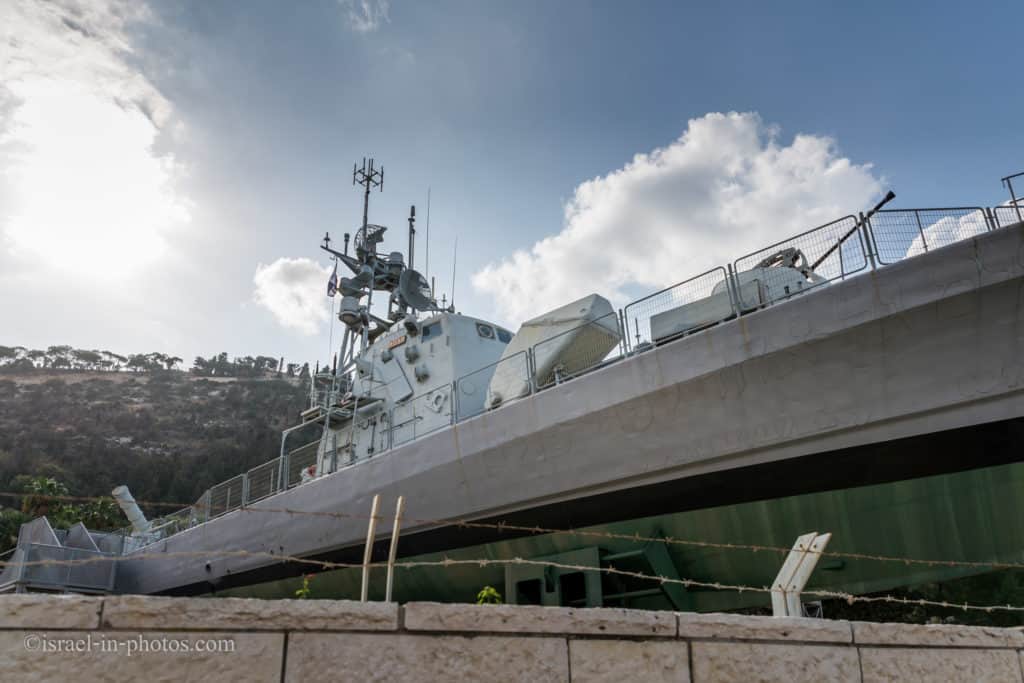
When we tried to open the entrance door and found it locked. We thought the museum was closed. But after a minute, a guard came and opened it. The Israeli Ministry of Defense runs the museum. Probably that is why they keep the door locked.
Clandestine Immigration
After purchasing the tickets, we entered the museum, and the first exhibits told the story of Clandestine Immigration.
This museum is dedicated to telling the story of the struggle for the right to immigrate to Israel during the years 1934 – 1948 when the British Mandate was in operation. That chapter of our history deals with clandestine Jewish immigration and the right to settle here.
It is one of the cornerstones of the establishment of the State of Israel. This story is displayed in our museum and includes historical documents, newspaper clippings, photos, original models, audiovisual materials, and films. To bring home the impact of this landmark in Israeli history, we use a computerized map of the various routes taken by the clandestine vessels, so that we can follow in their footsteps and thus view the story of these secret boats in its entirety. For example, we have on display the clandestine immigrant ship, the “Af Al Pi Chen,” (which can be translated as ‘In spite of all that’), both as an exhibit and also as the venue for a sound and light show (son et lumière) which we call ‘from the beach to beach.’
A special wing of the museum is devoted to the history of the Israeli navy, whose roots go back to this very clandestine immigration operation at the time of the British Mandate. Also included in this naval display are photos, certificates, sketches of battles with the British authorities, models of the ships, original exhibits, and finally, examples of arms and weaponry which were used in naval warfare during that time. In the yard which leads to the entrance to the ship, you can see the towering figure of the bridge of the submarine, the INS Dakar, which was retrieved from the water at the very site where it went under, from the astonishing depth of 3,000 meters. The entrance hall is used as a meeting place for various visiting groups. Here you can find some essential exhibits, including a model of the famous immigration ship, the Exodus.
The clandestine immigration ship, the Af Al Pi Chen (in spite of all that) played its part during the Second World War as a landing craft for tanks. It was then converted into a clandestine immigration ship by the people who were instrumental in organizing the Second Aliyah (the Mossad le-Aliyah Bet). The ship has been preserved in its entirety, both its external structure and its fittings and accessories. What’s more, in the ship’s lower deck, reconstructions have been made in the original bunks, the water distribution point, and the radio control room (code-named the ‘Gideoni’).
Source: www.visit-haifa.org
Af Al Pi Chen Clandestine Immigration Ship
“Af Al Pi Chen” (which translates to “Nevertheless”) is a clandestine immigration ship. This ship was initially a British Tank landing craft (Royal Navy Mark 2 Tank Landing Craft in World War II). HaMossad LeAliyah Bet purchased it and used it as a clandestine immigration ship.
After the establishment of the Israeli Navy, it was reconverted for use as a landing craft. In this role, it served during the Suez Crisis in 1956, and towards the end of 60, this vessel retired. It was elevated to shore, and today it serves as one of the main exhibits in this museum.
You are above ground level (second floor) when you exit the building. And here is Af Al Pi Chen:
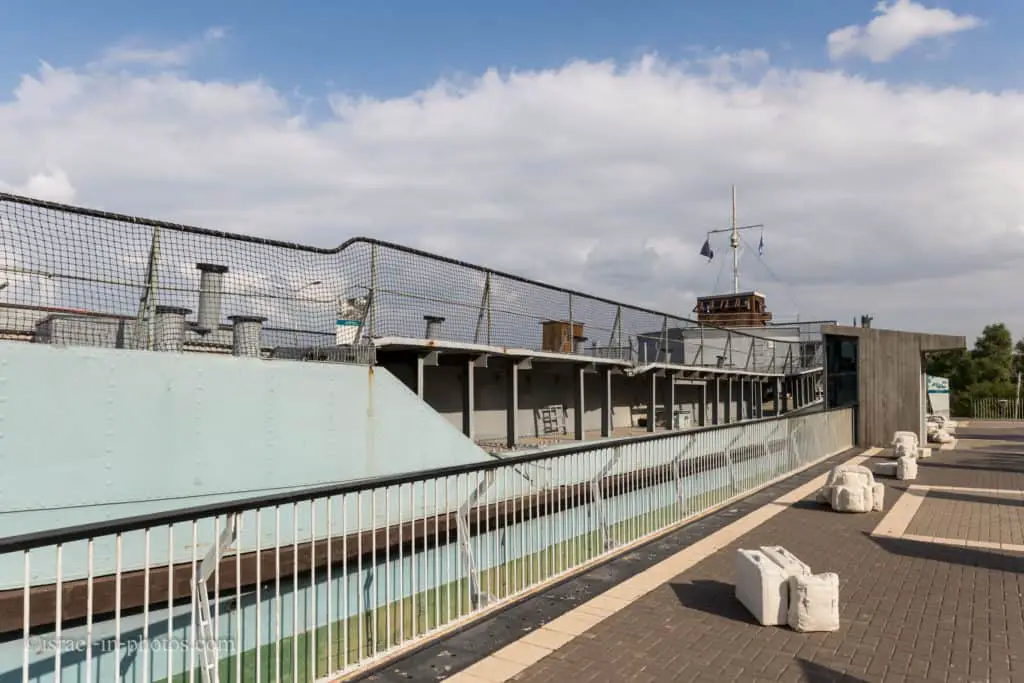
You can climb on top of the ship and explore different levels. Here we are on the top deck:
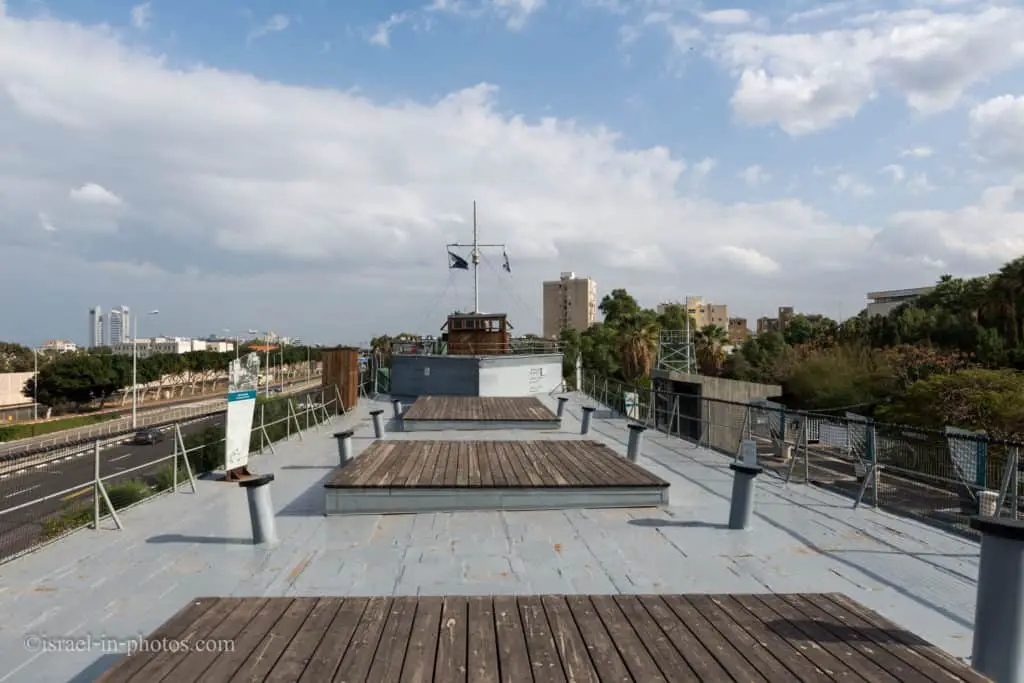
To understand the name of this vessel, we need to know the story of SS Exodus.
SS Exodus
Exodus 1947 was a ship that carried 4,500 Jewish immigrants from France to British Mandatory Palestine on July 11, 1947. Most were Holocaust survivors who had no legal immigration certificates for Palestine. The ship was boarded by the British in international waters, killing three on board and injuring some ten. The ship was taken to Haifa, where ships were waiting to return the Jews to refugee camps in Europe.
Source: Wikipedia
In September 1947, the ship sailed from Italy to Israel. While it was cruising, people from HaMossad decided to call it “Af Al Pi Chen” because, at that time, the immigrants from SS Exodus were caught and deported to Germany.
Inside Af Al Pi Chen, you can see how people lived while on this ship.
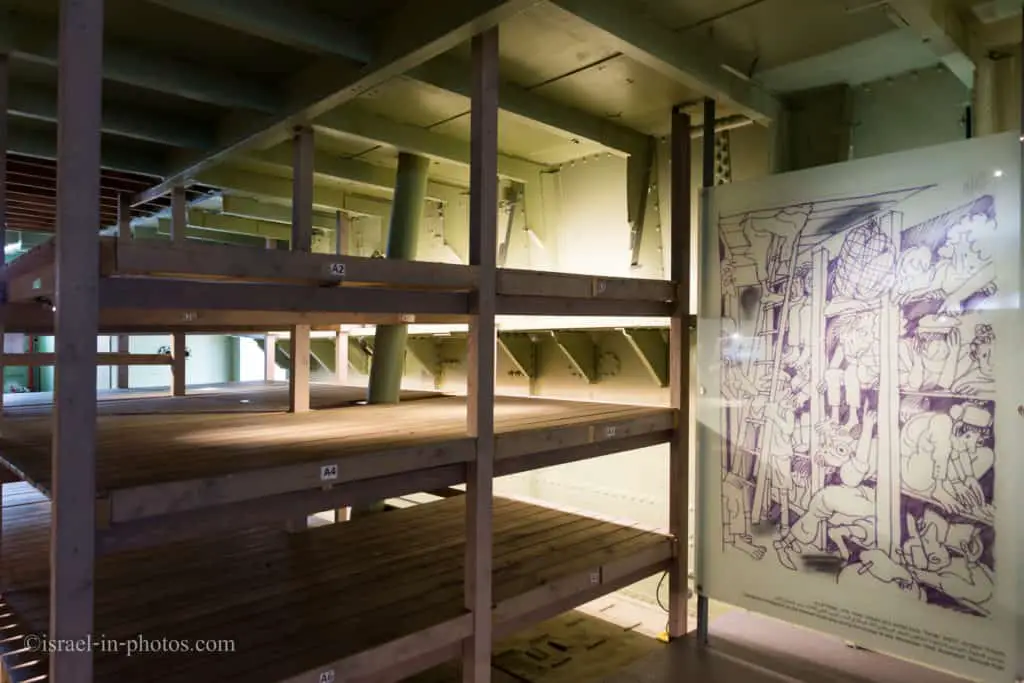
You can also see a short movie about these events.

On September 26, 1947, British soldiers took over Af Al Pi Chen near Israel’s southern coast. The clandestine immigrants fought the British sailors, pelting them with anything on hand. The British responded with clubs, tear gas, and sometimes gunfire. Nine immigrants were injured, and one was killed. And the ship was towed to Haifa port.
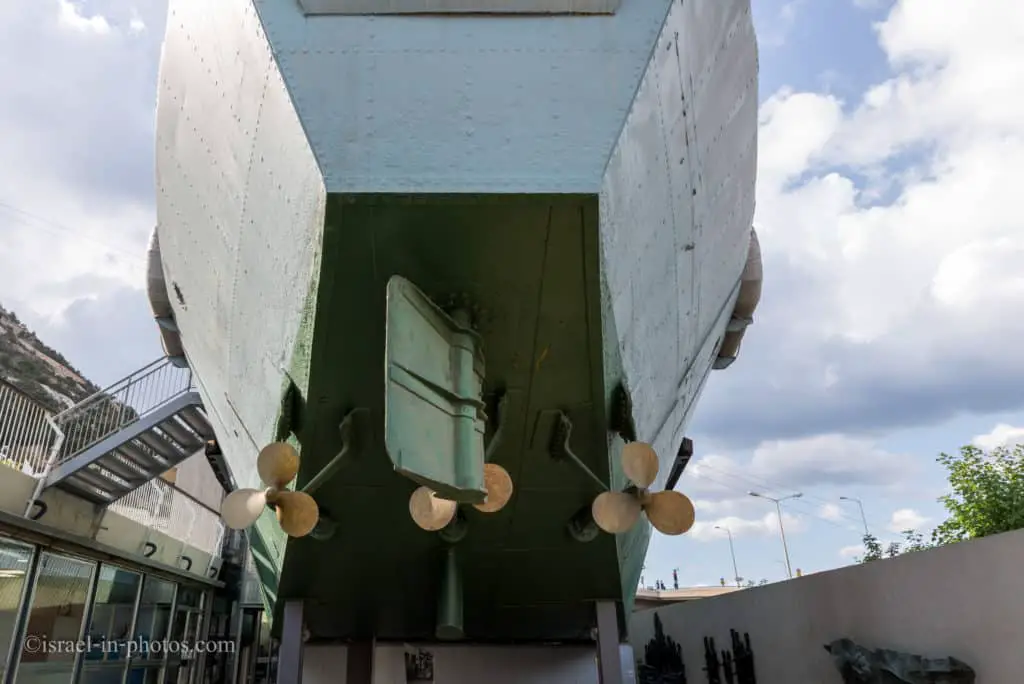
The first section of this naval exhibition deals with the early beginnings of Israel’s navy. It includes the story of the people who created the navy, as well as how the illegal immigration ships were transformed into warships. It is hard to believe that it was these people in these very vessels who realized their dream, the creation of the State of Israel in 1948. One of the most outstanding examples in this section is the amazing story of the naval operation which was code-named ‘Shoded.’ There is also a description of the sinking of the Egyptian flagship by Israeli commando boats, as well as the INS Eilat 16a – a ship dating from the First World War – in the first battle ever to take place in our naval history.
The second section depicts the 1950s, when Israel’s navy fleet first set sail throughout the length and breadth of the ocean deep, while the commando ships were gradually becoming more and more refined. Israel’s navy played its part in the Sinai War, even gaining significant reinforcements from an unexpected source to add to the already-existing number of destroyers. At the end of the decade, a very determined and inspired military officer, named Yosele Daror, possessing great foresight and vision, established Israel’s flotilla of submarines. One of the most important exhibits in this second section is a depiction of the surrender of the Egyptian destroyer, the Ibrahim Al Awal, which can be found on the original table of the ship’s combat center. Near the table, you can find several items which belonged to members of the naval commando. These include examples of their equipment and uniforms.
The third section deals with the 1960s and the beginning of the 1970s. Starting with the stinging naval failures of the Six-Day War, which were followed by two disasters in which heavy marine casualties were inflicted, the Israeli navy implemented dramatic changes which culminated in the truly astounding victories of the Yom Kippur War.
One of the most outstanding exhibits in this section is the Dakar submarine emergency buoy, which was discovered a year after the submarine sank. The submarine itself, however, was not discovered for many years afterward, despite the extensive searches for it. Also, you can view the uniform which belonged to the submarine’s crew member, Yosef ‘Almog’ Suisa, which was found close to the sunken submarine.
Yom Kippur War
The fourth section describes the progress of the Yom Kippur War, the coastal bombardment against the enemy, and the fighting in the area of the Red Sea. Also, you will be able to view a depiction of the operation known as ‘Peace in Galilee,’ which became the First Lebanese War (1982), as well as the war against terrorism. One of the most important exhibits in this section is a tank which was used to smuggle weapons, one of eighty such tanks which were captured in 2002 on the terrorist ship, the Karine A. Outside, on the grounds of the museum, are displayed some substantial items, which are too big for the museum itself. These are heavyweight guns and cannons which made history, enemy ships, terrorist boats, and, at the far end, the INS Mivtach, the first Israeli missile boat.
Source of the quotes above: www.visit-haifa.org
As I mentioned, we missed some exhibits and reached INS Gal. Thus use the Site Map from at the top of this post.
Note: “INS” stands for “Israeli Navy Ship.”
INS Gal – A Retired Gal-Class Submarine
After the 1968 loss with all hands of INS Dakar (an ex-British WW II T-class submarine), the Israeli navy decided to purchase its next generation of submarines as new construction. The three Gal class submarines (Gal, Tanin, and Rahav) were a co-production of Germany, Great Britain, and Israel. The boats were built in Vickers shipyard in England under the oversight of the German shipyard IKL.
Based on the German 206A type submarine, the Israeli Navy made significant changes to the class. Gal class submarines were small, quiet, safe, and technologically advanced for their time. Their small size made them very difficult to detect and ideal for the frequent coastal missions of the Israeli Navy. They served from 1976 until 2003 during which they took part in countless actions and operations with impressive results. Gal submarines played an essential role in the 1982 Lebanon war.
Gal‘s missions included intelligence, surveillance, embarking special operations forces, and at sea interdiction.
The class received numerous upgrades during its lifetime. During 1983 significant upgrades included the installation of the UGM-84 Harpoon cruise missile and its associated fire-control equipment. In 1987 NT 37E torpedoes replaced Mk 37s. All the boats were extensively overhauled in 1994-95 including improved sensors and fire control systems.
When the Dolphin-class submarines were commissioned, the older Gal boats were decommissioned and sent to HDW Germany to be sold. In collaboration with the Museums Unit of the Israeli Ministry of Defense and the Submariners’ Association, the German HDW shipyard donated the preparation and return of Gal to Israel to become a museum exhibit. In Oct 2007, after preparation at HDW, now at 450 tons she was lifted onto a heavy lift ship in Kiel, Germany. Once in Haifa, she was transferred to a custom-built trailer. During the move from the port to the museum, electric poles and a 200-ton pedestrian bridge were temporarily removed to enable the submarine to pass.
Specifications
Class: Gal class
Launched: 1975
At: Vickers at Barrow in Furness, UK
Length: 48.9m, pressure hull 33m
Beam: 4.9m
Height: 8.8m
Displacement: Surface 600 tons, Submerged 660 tons
Crew: 32
Propulsion: One shaft with a 2.85MW sustained power motor
Two MTU 16V 396 SE 84 diesel engines with 750kW alternators
Max Speed: Submerged 17 knots (45 minutes), Surface 11 knots, Snorkeling 9 knots
Max Depth: 200m
Source for the two quotes above: Historic Naval Ships Association (https://www.hnsa.org/hnsa-ships/ins-gal/)
Side entrance and exit were added for the visitors, which is how you can access INS Gal.

Inside the submarine, you can find many pieces of technology.
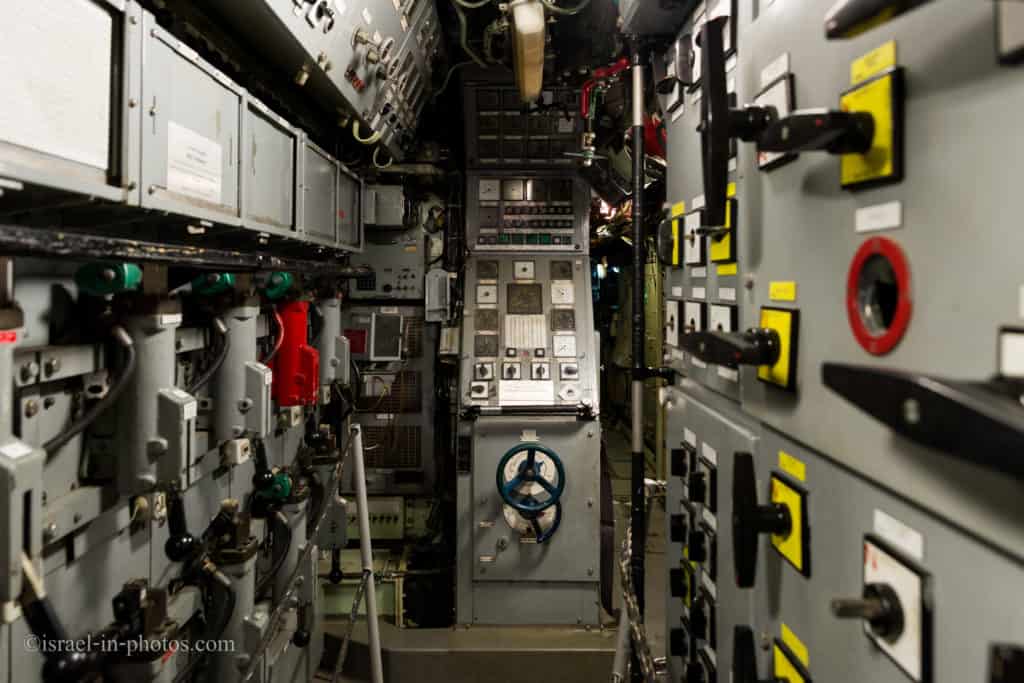
I constantly tried not to bump my head, but visiting a submarine was a fantastic experience.
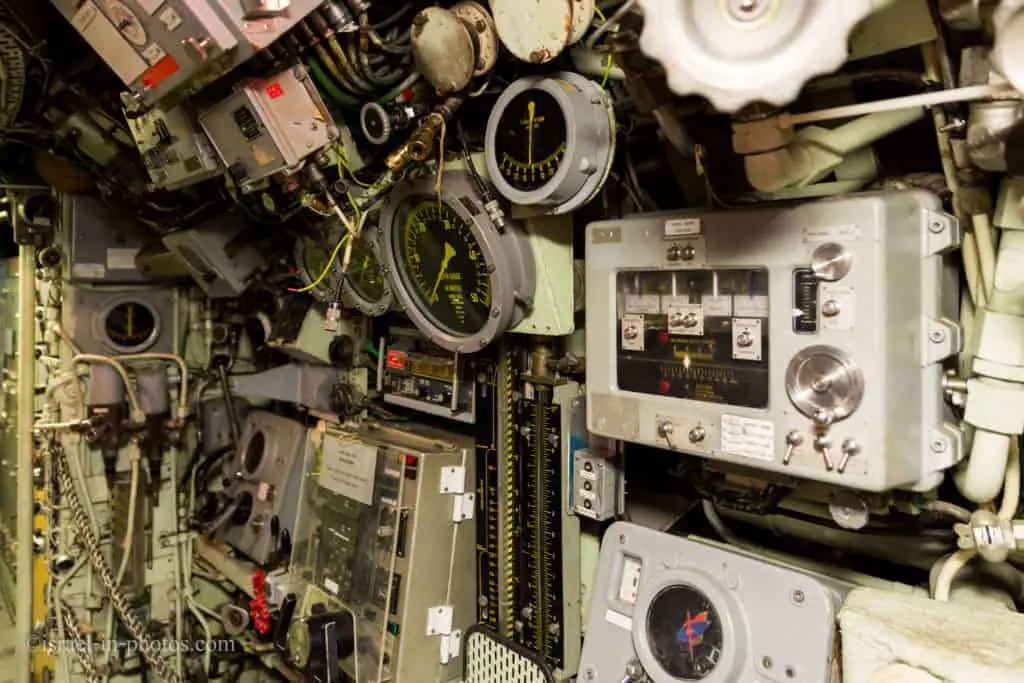
If you are claustrophobic, then think twice before entering INS Gal.

Here are several additional photos of INS Gal.
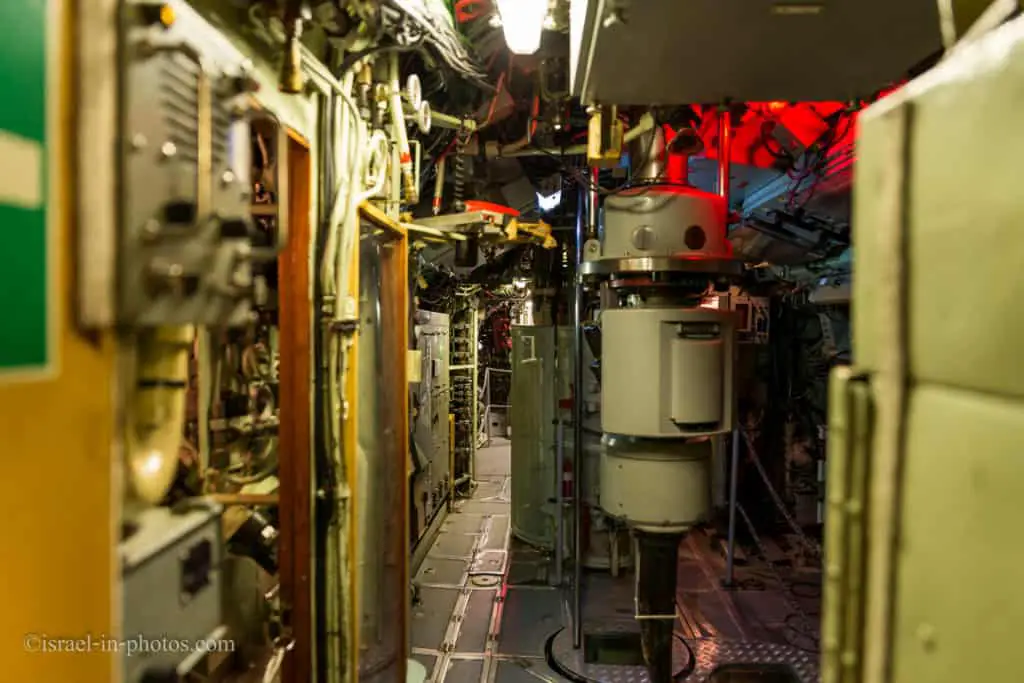

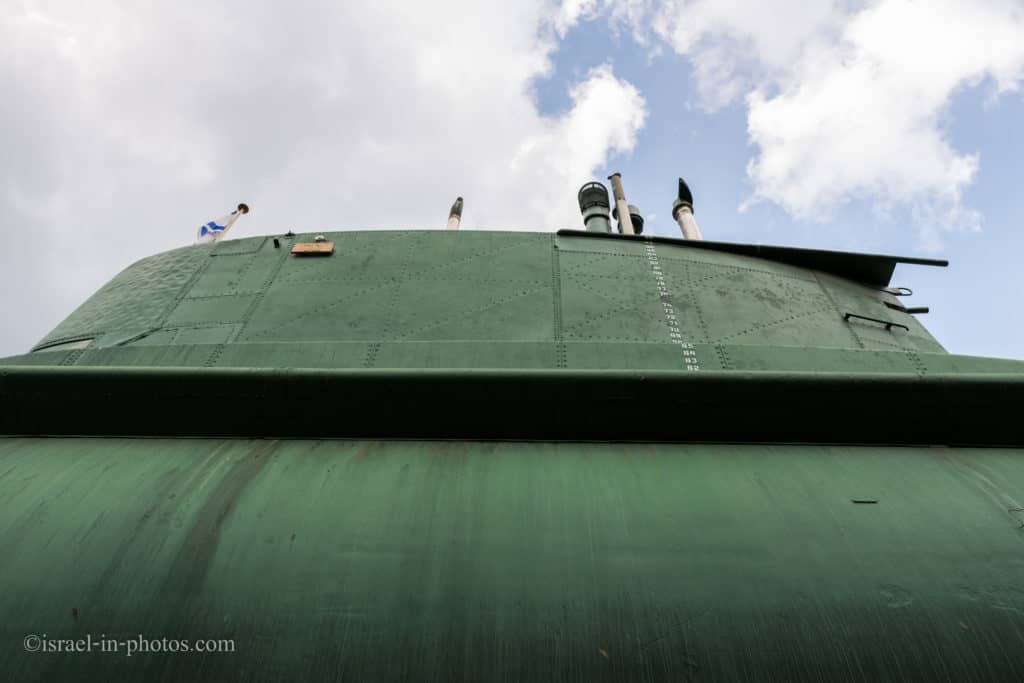

When we exited INS Gal, we headed to INS Mivtach. And here are several other vessels we saw on the way, though you can not climb them.
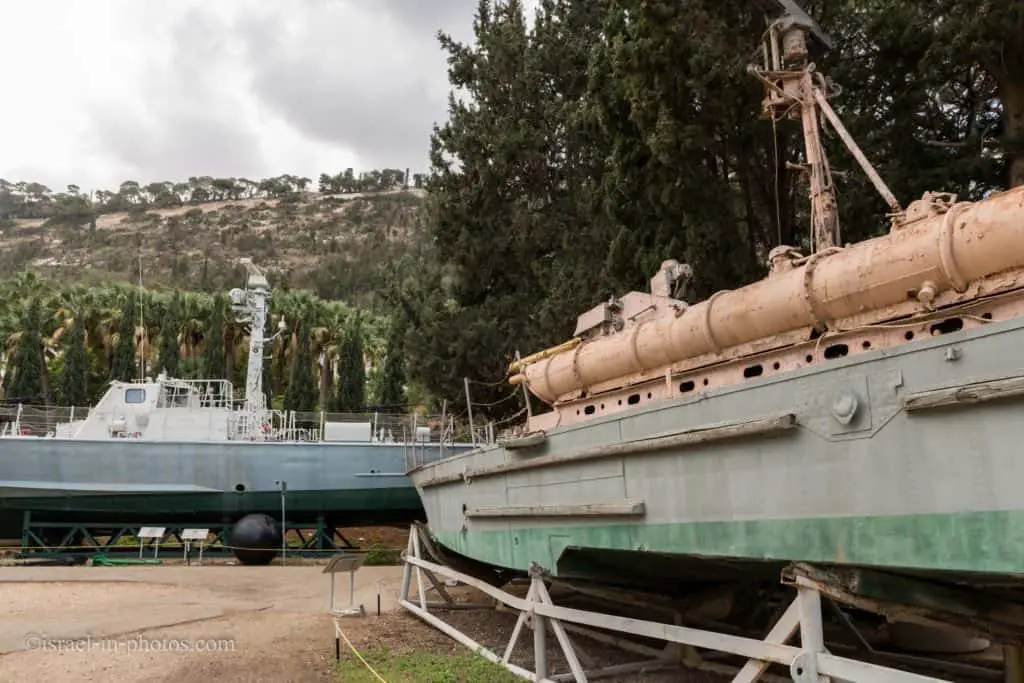
While climbing the stairs to INS Mivtach, we got a good look at the Dabur-class patrol boat.
Dabur-Class Patrol Boat
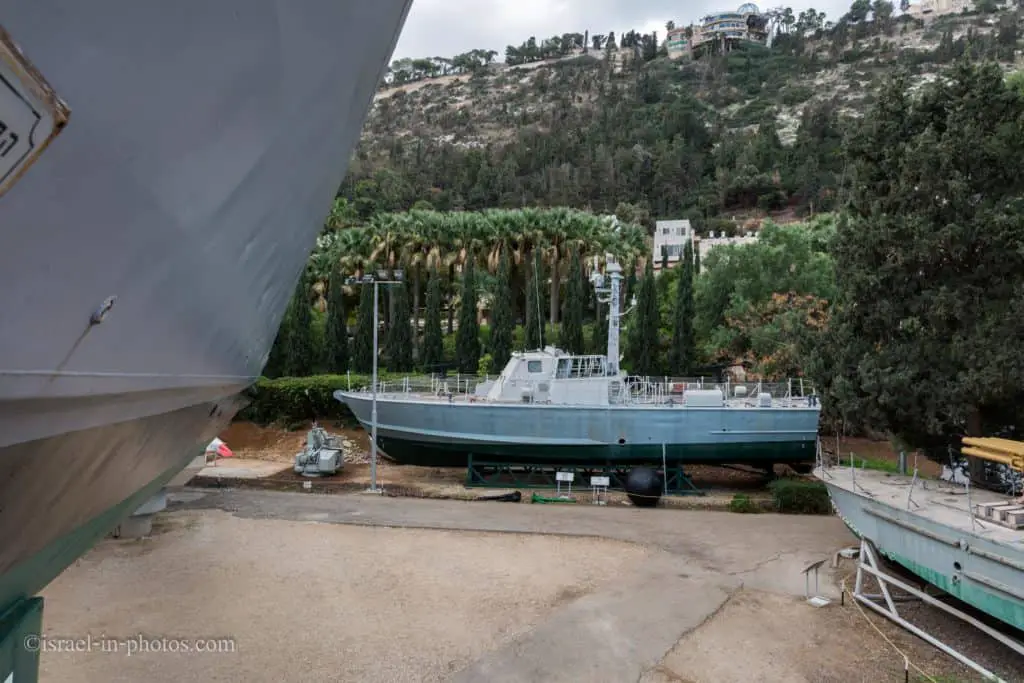
Dabur (also spelled Daboor) patrol boat mostly used for routine short-range security. The original type was purchased from the US. In the 1973 war, these boats succeeded in frustrating Egyptian efforts to attack Israeli forces in the Suez bay.
In the late seventies, Israel Aircraft Industries began to build such boats.
During the eighties and nineties, numerous improvements were implemented, including speed and maneuverability enhancements. And over their years of service, these boats managed to intercept or sink dozens of terrorist vessels on their way to attack.
Specifications
Length: 19.8m
Beam: 5.8m
Draft: 30 tons
Speed: 25 KTS
Propulsion: 2 GM engines
Armaments: 2 20mm guns
Machineguns: 0.5 or 7.62
Crew: 8
INS Mivtach – A Decommissioned Missile Boat
INS Mivtach was launched on 11 April 1967 in Cherbourg Ship Yard, France as a modern type of vessel equipped with sea-skimming missiles, at the time a brand new concept. The Soviets had deployed Styx ship-to-ship missiles on small vessels, but they were handled as if they were torpedo boats with unguided missiles.
The new missile boats were designed to process the tactical picture in the open sea on their own and to launch beam-riding missiles guided by radar/optic or independent homing missiles. The Israeli navy had developed this concept during the early 1960s, and the Cherbourg shipyard was chosen to build the fleet.
On December 25th, 1967 INS Mivtach set sail for its homeport in Haifa, Israel. Upon its arrival, the ship was temporarily equipped with 40 mm Guns and began its service as a gunboat (Sa’ar 1). The Gabriel missile system was not deployed on the ship until 1973.
During April 1973 Mivtach transported special operations forces and served as the command ship during a daring commando raid against a terrorist headquarters in Lebanon (Aviv Neurim).
In the Yom Kippur War (October 1973) she participated still as a gunboat in the first missile boat battle in the world (Latakia battle) during which one enemy torpedo boat, a minesweeper, and three enemy missile boats were sunk.
In the years after the 1973 war, the ship was intensely involved in the interdiction of terrorists.
During the Spring of 1979, the ship was the first to be equipped with a new sonar array (VDS) and the Gabriel missile was replaced by the Harpoon missile system.
On 11 January 1996 the ship was decommissioned and in a complex logistic operation transferred to the museum where she resides today.
Specifications
Class: Missile Boat
Launched: 11 April 1967
At: Cherbourg, France
Length: 45m
Beam: 7m
Displacement: 240 tons
Crew: 45
Armament:
Phase:
- 1967: Three 40mm guns (L-70) controlled by optic director (Galileo).
- 1974: Two 40mm guns, 5 Gabriel missiles, 4 ASW torpedo (mk 44\46).
- 1984: One 40mm guns, 4 Harpoon missiles, 3 ASW torpedo (mk 44\46).
Sonar:
Phase 1: Hull mounted (Elak)
Phase 2: VDS (Ido)
Propulsion: 4 diesel engines (Maibach) 16v cylinder 3500 hp, 40 knots
Source for the two quotes above: Historic Naval Ships Association (https://www.hnsa.org/hnsa-ships/ins-mivtach/)
Exploring the interiors of INS Mivtach:
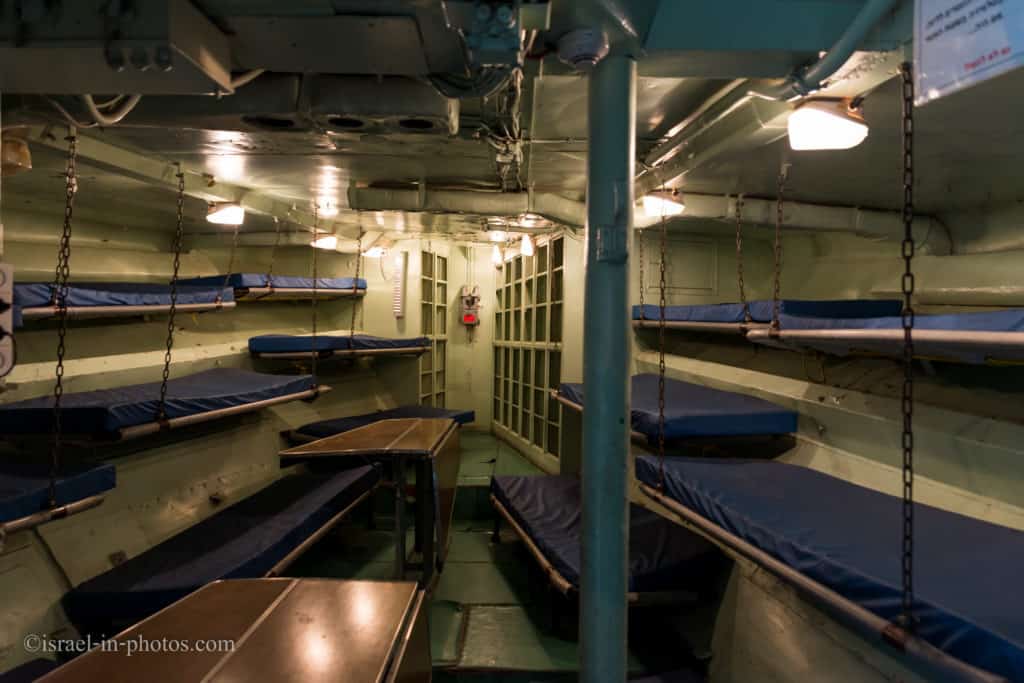
The tactical plan was built in the Combat News Center as data from the sensors and communication devices were gathered.
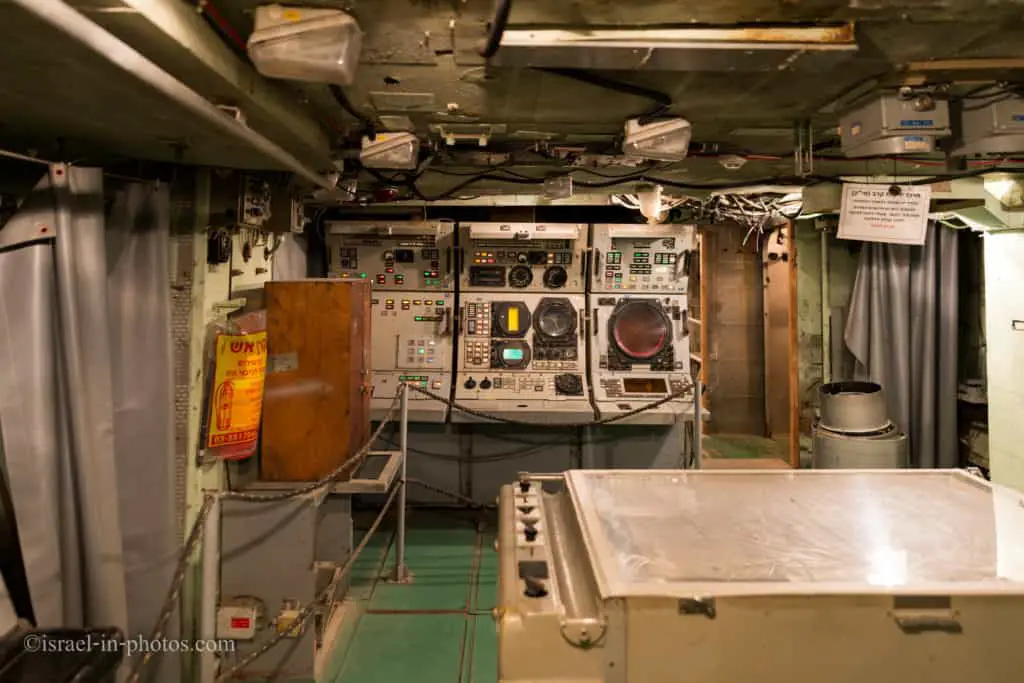
Here are several additional photos from the inside of the missile boat.
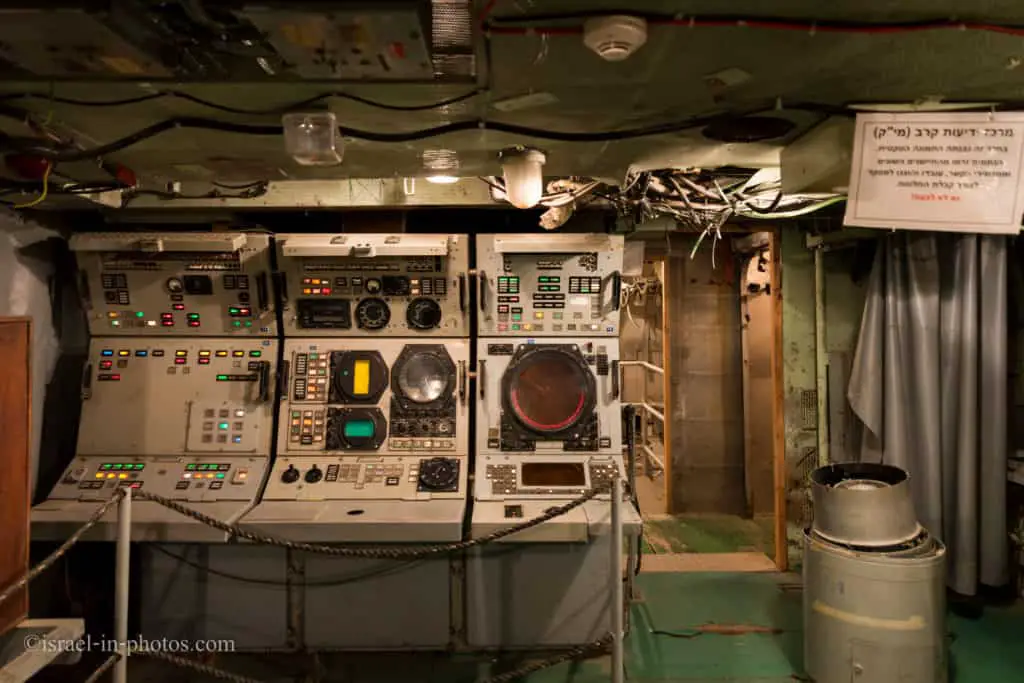

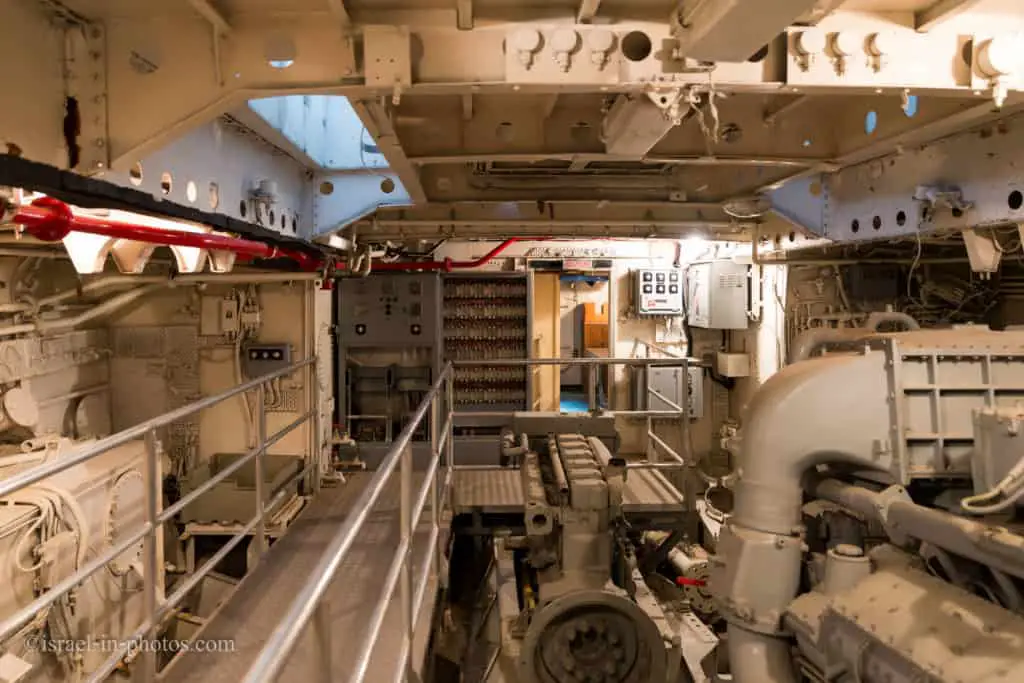
Trailing Sonar
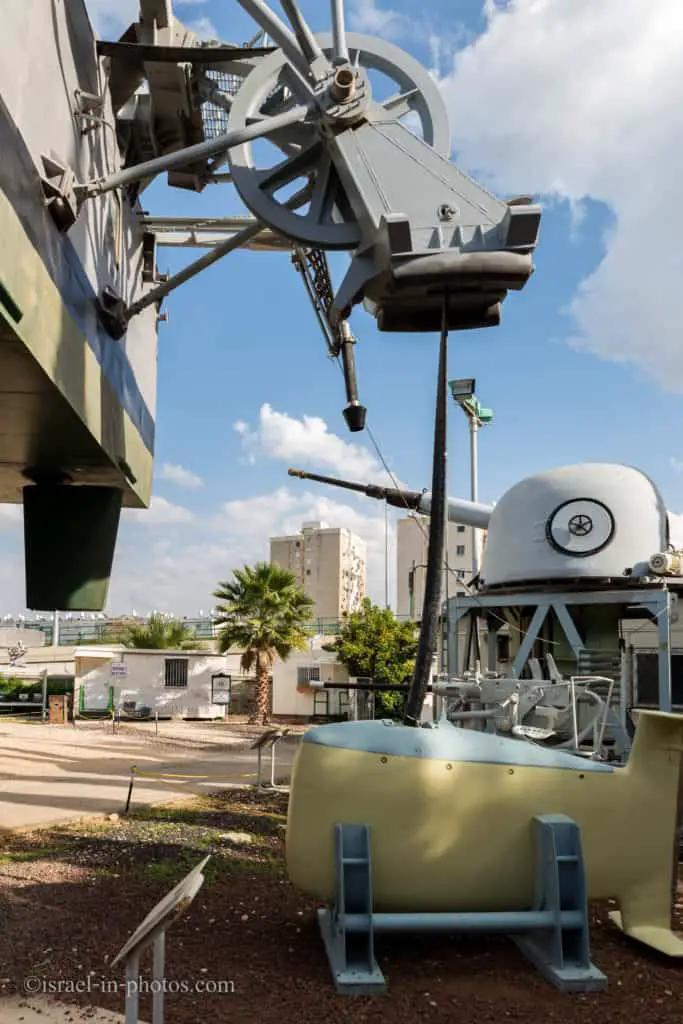
In the exhibition, a trailing sonar was attached to INS Mivtach. This fish resembling vessel was used to discover and track submarines. The sonar is attached to the ship using a cable and towed by it. Under optimal conditions, it can find submarines within an eight km radius.
There are many other exhibits in the Clandestine Immigration and Naval Museum, but since we came here after visiting the National Maritime Museum, my daughter was tired. And hence we saw all the main exhibits. We decided to end our tour at this stage.

Last glance at INS Mivtach, and we headed to the nearby exit.
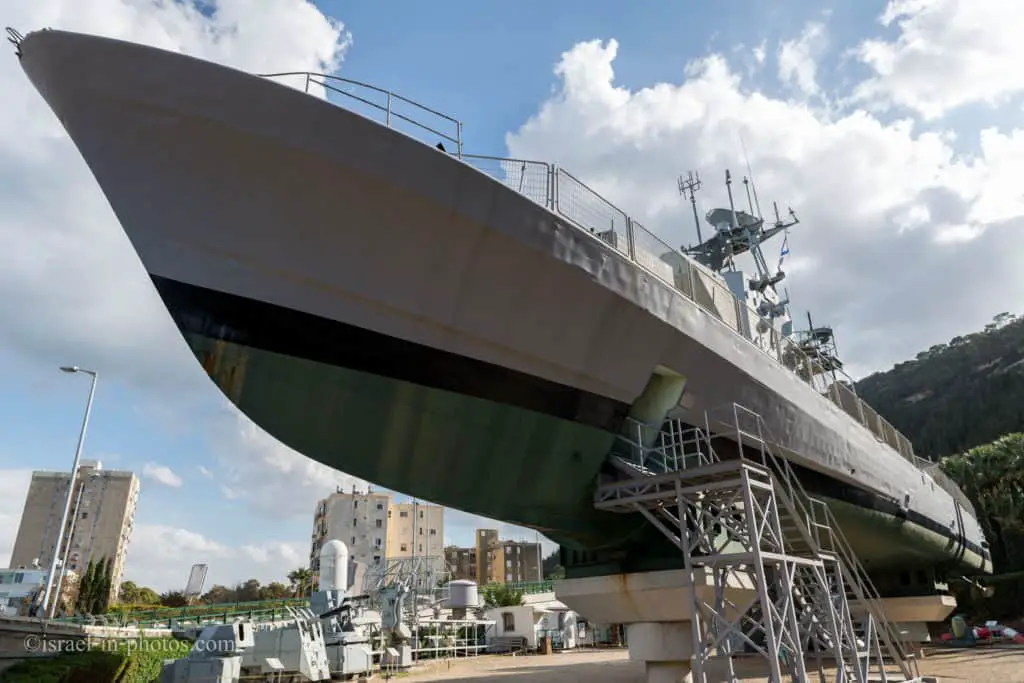
Summary
Clandestine Immigration And Naval Museum is not a very big museum, and it took us less than two hours to cover most of it. But despite its size, I would recommend this museum to everybody. Younger kids will not understand much about Clandestine Immigration, but they will enjoy exploring the vessels. And older kids with adults will learn a thing or two. The only downside of this museum is the limited opening hours.
And if you are already in Haifa and love such attractions, I can suggest the Railway Museum.
Have you ever been to the Clandestine Immigration And Naval Museum? Tell us about your experience in the comments below.
That’s all for today, and I’ll see you in future travels!
Stay Tuned!
Additional Resources
Here are several resources that I created to help travelers:- Trip Planner with Attractions and Itineraries is the page that will help you create your perfect travel route.
- What is the Best Time to visit Israel? To answer this question, we will consider the weather, prices, holidays, festivals, and more.
- Information and Tips for Tourists to Israel will answer the most common questions tourists have about Israel (including safety, passports, weather, currency, tipping, electricity, and much more).
- Israel National Parks and Nature Reserves include a complete list, top ten, map, tickets (Israel Pass, Matmon, combo), and campsites.
- If you are looking for things to do, here are the pages for Jerusalem, Tel Aviv, Haifa, Sea Of Galilee, Akko (Acre), Eilat, Nazareth, Safed (Tzfat), and Makhtesh Ramon.


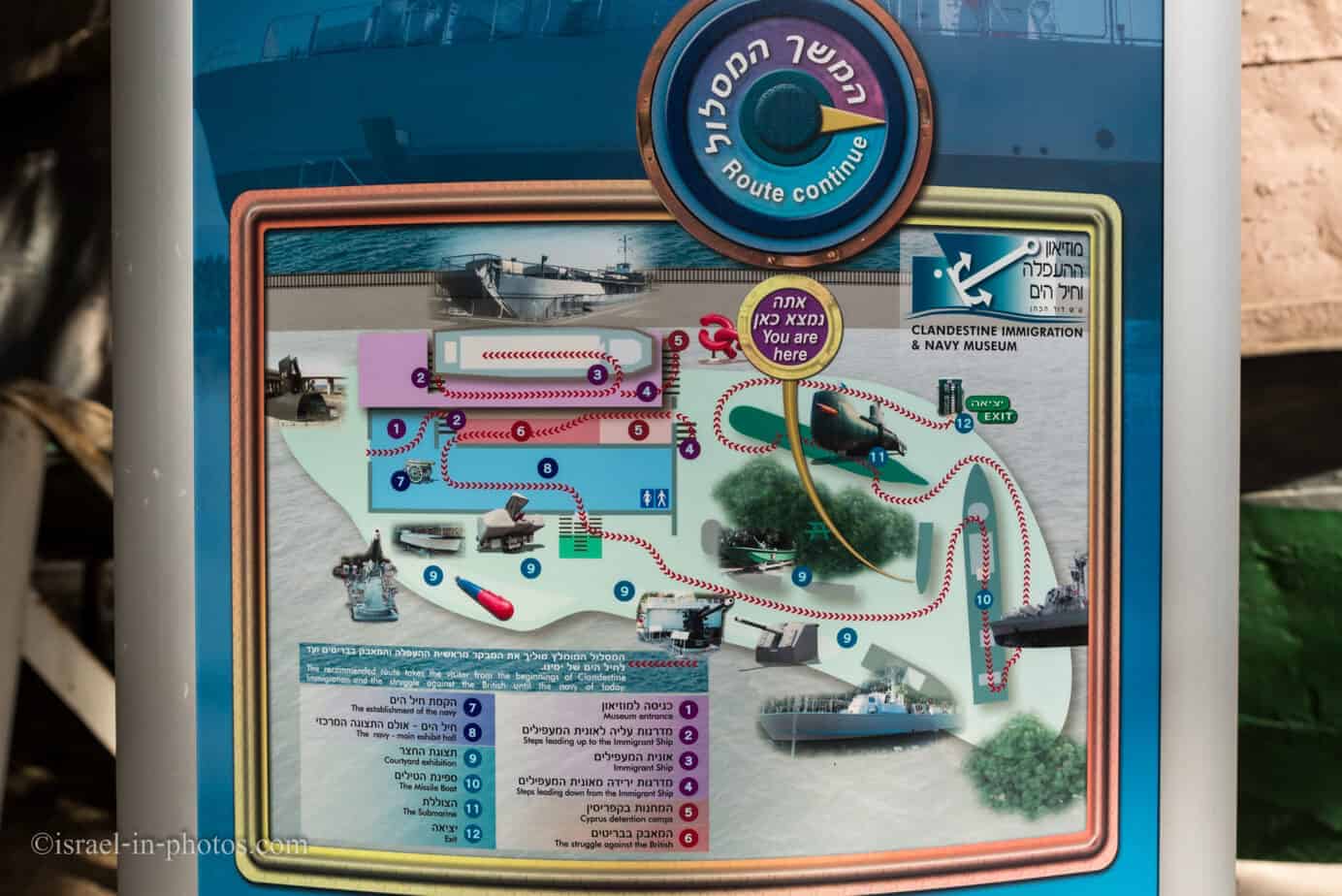


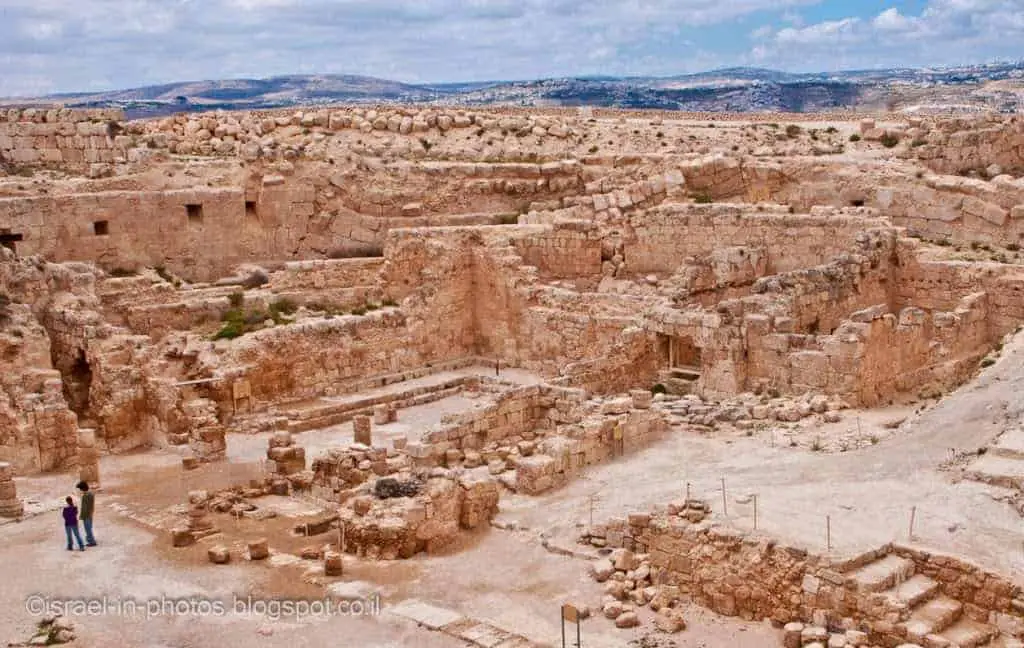
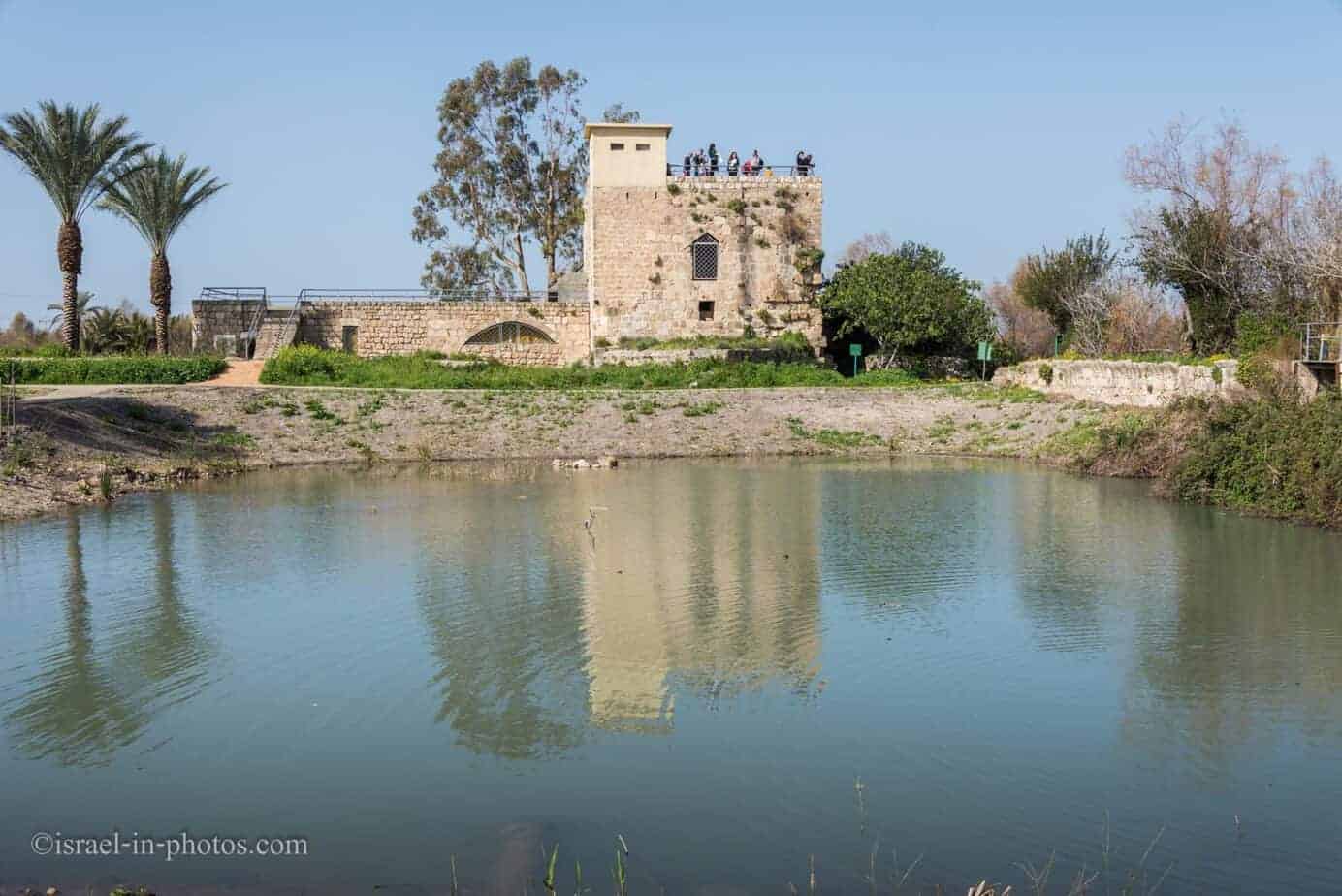
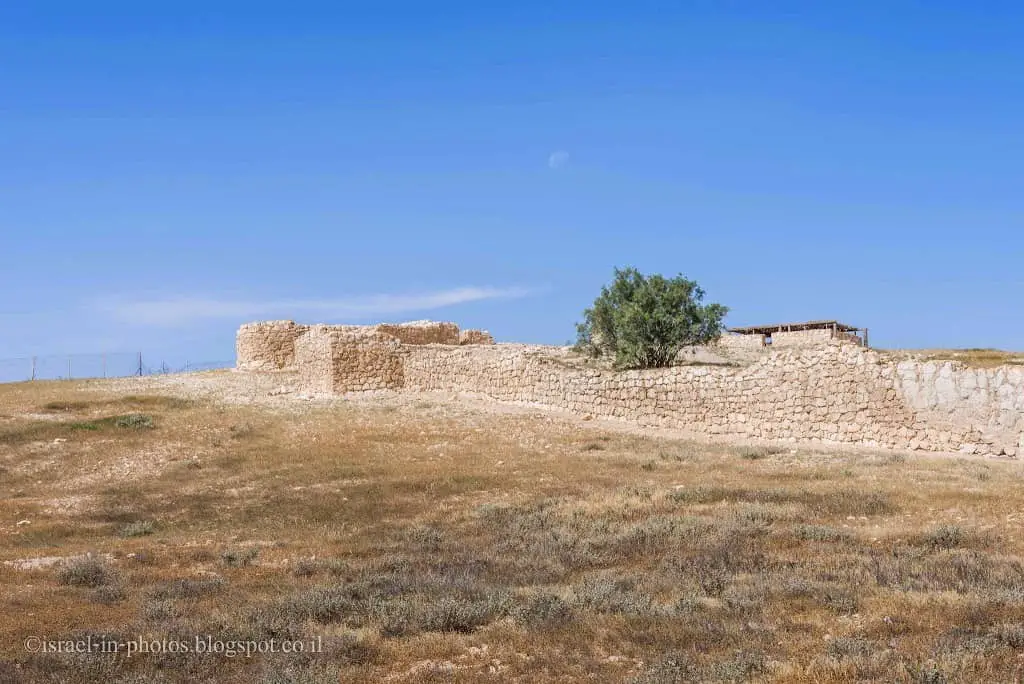

Perhaps, this is the most complete description of the museum, which I have found so far. Thanks a lot! Probably because of, that this museum is under protection, I could not find a photo of its entrance anywhere… Google maps is hard to navigate, because there are roads, not the objects themselves are the main subject of shooting. Next week our family will go to Haifa for a tour (ourselves, “savages”) by public transport. With difficulty, we found a walking route from the bottom station of the cable car in Bat Galim to the installed submarine. There is no entrance and it is not clear, how to get there on foot. Can you help? In any case, thanks again for the story and photos!
Hi,
Both these places are located near each other. Once you exit the cable car station, you can see the remains of a submarine on the other side of the road. It is the Clandestine Immigration and Naval Museum. But since there are train rails in the middle, to get to the other side of HaHagana avenue, take the stairs to the top of the bridge to your right.
Thanks.
Thanks for the answer! Visited there yesterday, found a ladder up to the track, and stairs down, to the museum. It was a very interesting tour.. But I think to repeat it in the winter, because the heat in the compartments is incredible.